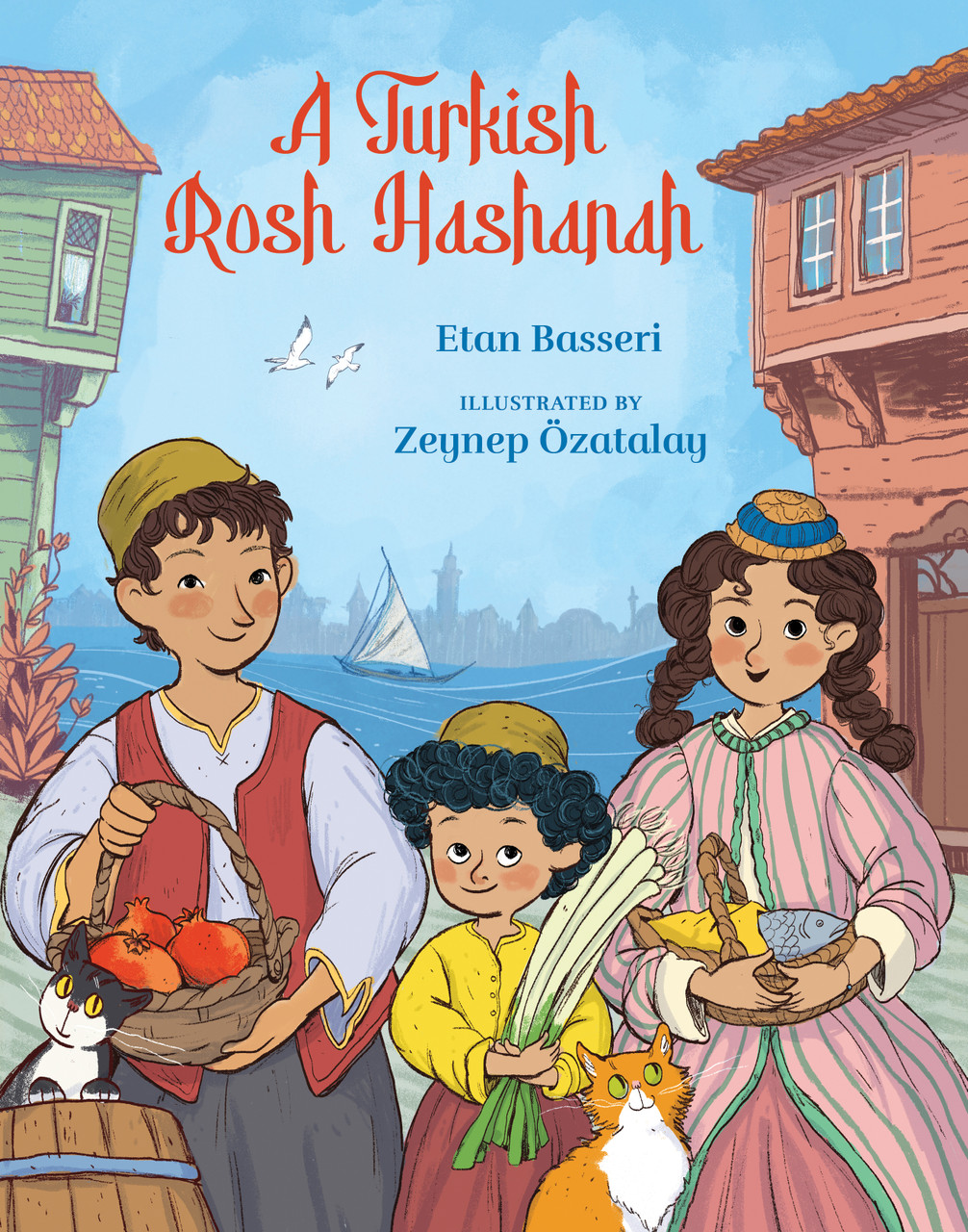Etan Basseri, Illustrated by Zeynep Özatalay
A TURKISH ROSH HASHANAH
Moosic, Pa., Kalaniot Books, 2022, ISBN: 1735087564
Reviewed by Annette B. Fromm1
Kalaniot Books is known for their commitment to publishing informative, delightfully illustrated children’s books centered on Jewish themes. They are only one of several presses that are now expanding to add titles that reflect the true diversity of Jewish communities worldwide. These publishing efforts are, indeed, welcome additions to the growing repertoire of Jewish children’s literature. A Turkish Rosh Hashanah is a recent example of this initiative to represent a more representative and true mosaic. It is the second Kalaniot title by Etan Basseri, himself of Persian-Jewish ancestry. His own heritage is reflected in his first book, A Persian Passover.2
In this book, readers are carried through a richly illustrated text to late nineteenth or early twentieth century Istanbul. There, three cousins learn about the holiday food traditions and customs as they accompany their Sephardic grandmother through the market making purchases specifically for their New Year celebrations. The stalls are piled high with seasonal produce including pumpkins, leeks, beets, and other items that form the yehi ratzones, prayers said over the symbolic fruits of the season. Their final and perhaps most important purchase are the fresh, ripe pomegranates.
Along the way, the cousins have several encounters that enrich the story. As they make their way home, however, a bully intent on mischief crosses their path. You will have to read the book to find out what he had in mind, and how the children countered him.
As the family assembles to mark the start of the New Year, the significance of each of the foods gathered at the market earlier in the day are explained to the entire family.
This wonderful introduction to some important and distinct aspects of Rosh Hashanah celebrations in a Turkish Jewish family is closed with a brief synopsis of the history of Jews in Turkey along with a more detailed explanation of their traditions associated with the Jewish New Year. The text is peppered with Ladino words, all included in a glossary at the end of the book.
Illustrations by Zeynep Özatalay colorfully bring to life this day filled with preparations for the holiday. She vividly captures the landscape of Istanbul. Özatalay pays attention to many details in her illustrations, including the particular clothing worn by Sephardic Jews at that time as well as the furnishings in the grandmother’s home.
1 Annette B. Fromm is the review editor and associate editor of Sephardic Horizons.
2 For a review of this title, see: Sephardic Horizons Volume 13, Issue 3, 2023.

